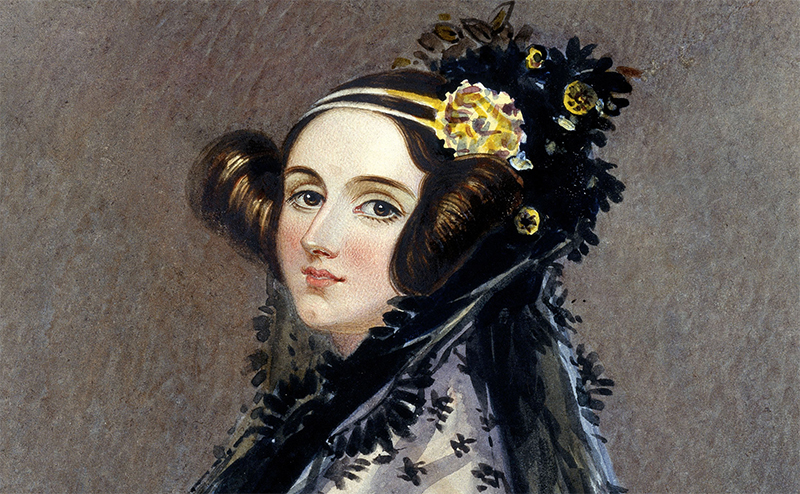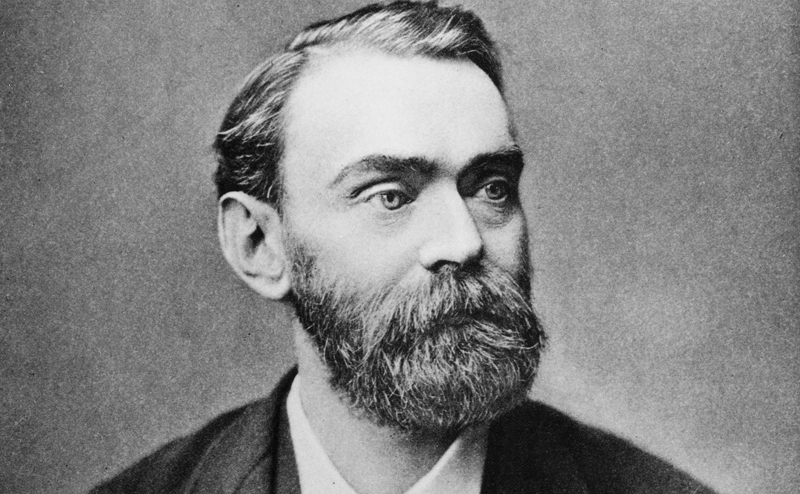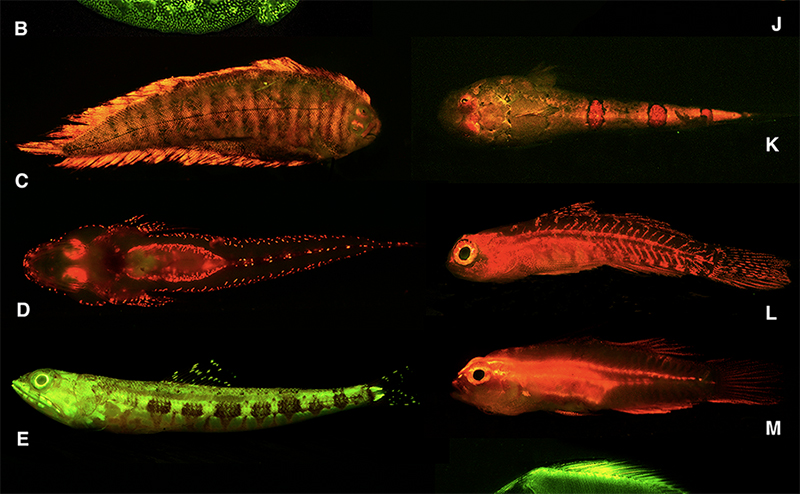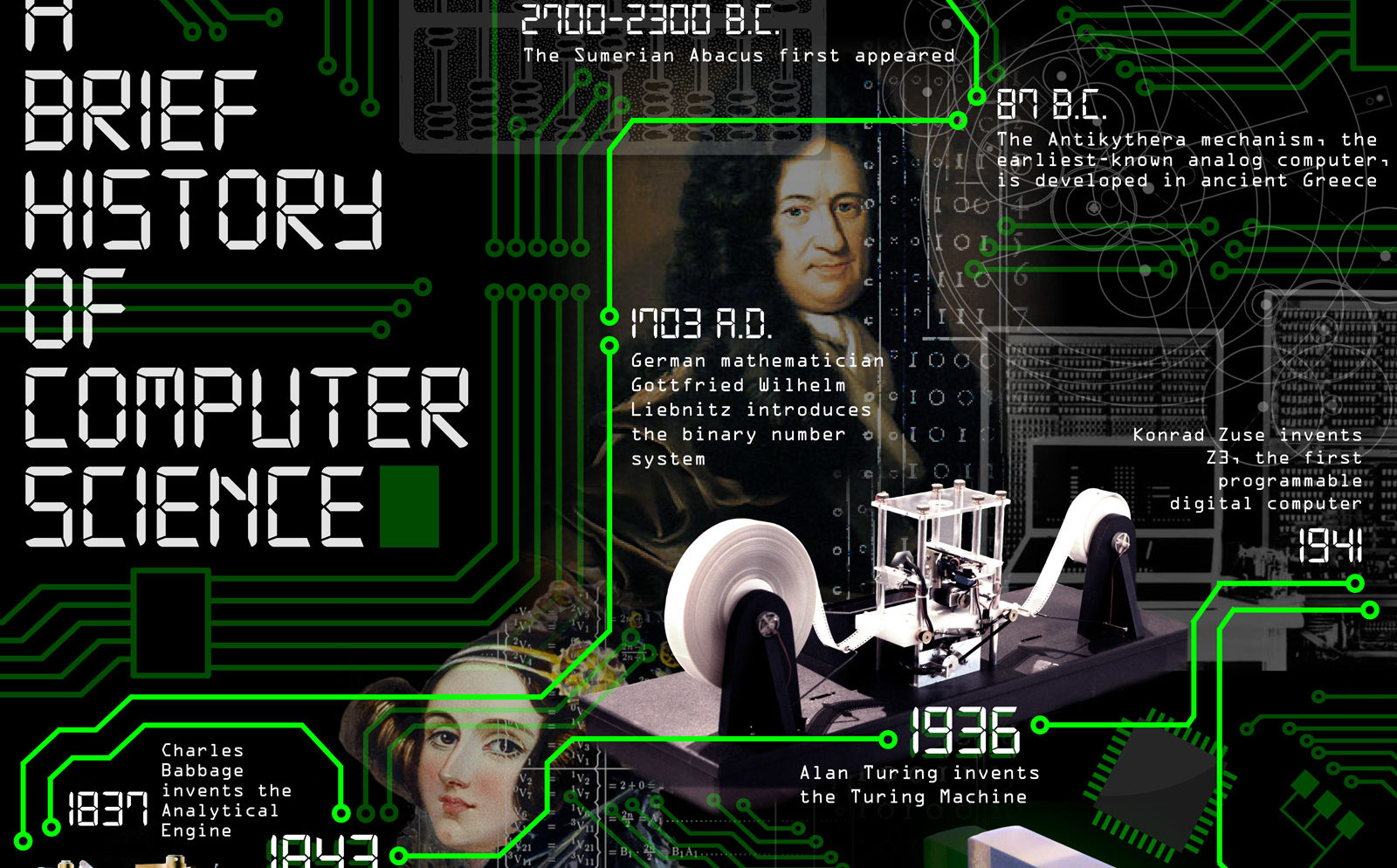Articles
A triplefin blennie (Enneapterygius sp.) under white light (above) and blue light (below). All photos courtesy of American Museum of Natural History. ©J. Sparks and D. Gruber A team of researchers led by scientists at the American Museum of Natural History (AMNH) has discovered widespread biofluorescence in ocean fish. The study, published today in PLOS ONE, identified 180 species that glow in a range of colors and patterns. While biofluorescence has been long observed—in underwater organisms like coral and jellyfish, and in land animals like butterflies and parrots—fish biofluorescence has gone virtually unreported until now. Biofluorescence is not the same thing as bioluminescence, which has also been found in marine organisms like certain squid and octopus. Bioluminescence occurs when a chemical reaction in an organism generates light. Biofluorescence occurs when an organism absorbs light, transforms it, and emits it as a different color. Fish live in a world that is predominantly blue—water, with depth, quickly absorbs the majority of the visible light spectrum. Biofluorescent fish take in the blue light and re-emit it in neon greens, reds, and oranges. But this biofluoresence is invisible to the human eye; the AMNH’s investigation began only after an accidental discovery of green eel …
Read MoreSorry, Saint Patrick: A recent Yahoo! Shine study discovered that New Year’s Eve is the most popular American drinking holiday. And there’s no better conversation to have, while waiting for the ball to drop, than talking about the wine in your hand. We decided to investigate some of the chemistry of wine, to arm ourselves—and you—with informed answers to common questions about wine. Is the temperature of wine really that important? Even the most novice wine drinker knows you chill white wine, and serve red wine at room temperature…right? Well, from a chemistry standpoint, the temperature itself is far less important than the stability of the temperature. Wine should be stored in a space that can maintain a consistent temperature, roughly 55°F, because fluctuations in temperature cause expansion and contraction. Wine in its bottle contracts and expands much more than the bottle itself; as wine warms, this discrepancy causes the pressure in the bottle to increase, allowing a small amount of the wine’s bouquet (the aromas developed after fermentation) to escape through the cork. When the bottle cools down, the wine contracts more than the glass, causing a vacuum that pulls a greater amount of air in through the cork. …
Read MoreIn the past sixty years or so, computers have migrated from room-size megaboxes to desktops to laptops to our pockets. But the real history of machine-assisted human computation (“computer” originally referred to the person, not the machine) goes back even further. This week is Computer Science Education Week, and to kick things off the World Science Festival celebrates the long history of man’s best friend, the computer. First in the historical record was the abacus, helping the ancient technorati gain an edge over trading partners still counting cows and amphorae by hand. The oldest known complex computing device, called the Antikythera mechanism, dates back to 87 B.C; it’s surmised the Greeks used this gear-operated contraption (found in a shipwreck in the Aegean Sea early in the 20th century, though its significance wasn’t realized until 2006) to calculate astronomical positions and help them navigate through the seas. Computing took another leap in 1843, when English mathematician Ada Lovelace wrote the first computer algorithm, in collaboration with Charles Babbage, who devised a theory of the first programmable computer.
Read MoreMicroMappers, an innovative app that matches people in need during humanitarian crises to those who deliver aid, was deployed with great success following Typhoon Haiyan in the Philippines. The app, which relies on the public to tag tweets, was used by hundreds of volunteers around the world over the course of a few days to help the UN identify and map out areas in most need of humanitarian aid. MicroMappers, led by Patrick Meier from the Qatar Computer Research Institute (QCRI), was developed during Science Hack Day NYC, a collaboration between the World Science Festival and the NYU Interactive Telecommunications Program.
Read More
Ada Lovelace, whose real name was Ada King, Countess of Lovelace, and daughter to the poet Lord Byron, is widely considered to be the world’s first computer programmer, at least in the theoretical sense. As a young woman, Lovelace befriended the mathematician Charles Babbage who wrote plans for the Analytical Engine, a clockwork counting machine. In 1843, Lovelace translated an article on the Analytical Engine by Italian Engineer Luigi Menabrea. Babbage asked Lovelace to expand upon the article in appendix notes—which eventually ran triple the length of the original piece. Those notes included an algorithm, steps the computer would take in solving certain mathematical sequences, which overtime has awarded her credit as the first computer programmer. Unfortunately, the machine was never built, so the program could never be tested.
Read More
Starting Monday, the 2013 Nobel Prize winners will be announced in a series of ceremonies over the course of the week. The Nobel Prize is longstanding in its prestige (and controversy). Here are a few lesser known facts: The Nobel Prize was started by Alfred Nobel, the inventor of dynamite. Nobel, a brilliant chemist, engineer, inventor, and entrepreneur amassed 355 patents (and quite a fortune) by the time he passed away in 1896. When the executors of his estate opened his will, they discovered that Nobel’s wish was for his wealth be used to create prizes in Physics, Chemistry, Physiology and Medicine, Literature, and Peace. The awards were to go to individuals or organizations who in the preceding year had “conferred the greatest benefit to mankind” in these categories. Nobel’s wish took everyone by surprise, including his family and the institutions he designated to pick winners. The first prizes were not awarded until five years later, in 1901. That’s right, the founder of the Nobel Peace Prize was the inventor of an explosive. Nobel actually believed that in creating dynamite, he was bringing the world one step closer to peace. “When two armies of equal strength can annihilate each other …
Read More













